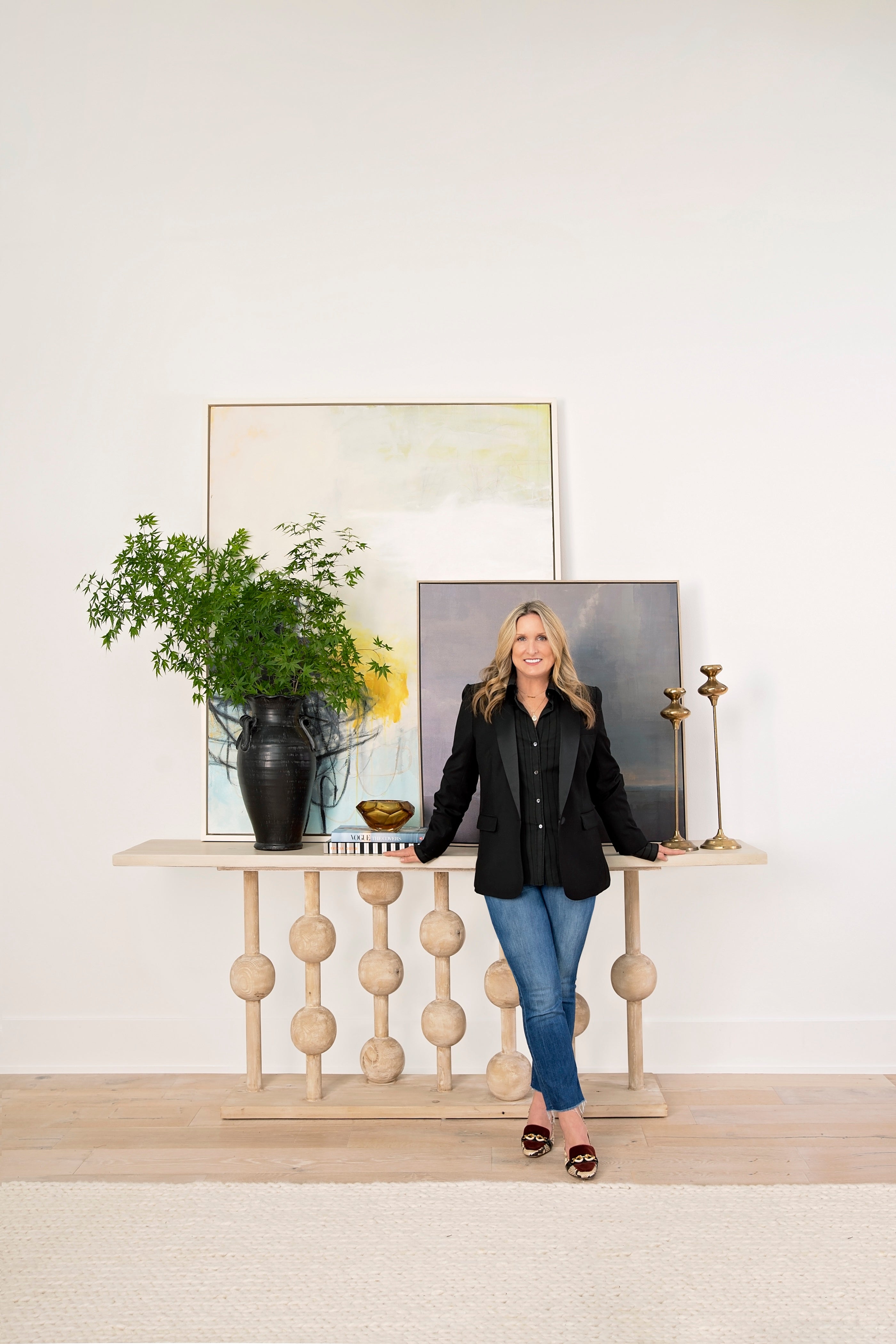The 50 States Project is a series of candid conversations with interior designers across the country about how they’ve built their businesses. This week, Fayetteville, Arkansas–based designer Casey Sarkin tells us why it’s harder to finish a project post-Covid, how she found her niche with an ultrawealthy and extremely private clientele, and why one regional magazine has been key to her firm’s growth.
What was your path into the design industry?
I got a degree in business, moved to Dallas and worked for Smith Barney. I loved it but it was boring, so I took a part-time job at The Limited because I loved the whole clothing thing. I got in my mind, “That’s what I want to do,” and I moved from [wealth management] to store management, and I managed some big mall stores. Then I moved back to Fayetteville, where I had gone to college, and I opened a clothing store. When you’re in your 20s, nothing is impossible—you’re just like, “I’m going to do it,” and that’s what I did.
I bought a house and I started decorating it, and then my [now] husband and I did another house and started decorating it. People would ask, “Oh, will you come help me with my house?” So, for four or five years, I was decorating houses on the side for free. I sold my [retail] business and started having children, and then At Home in Arkansas called me and said, “We’ve heard all this stuff about your home. We would love to come see it and put it in our magazine.” My house got featured, and I just got flooded [with project inquiries].
Wow, that was it?
[After that], it was, “Will you help us with our house?” And I was like, “Sure.” So I still started off free, because I didn’t value myself and I wasn’t “trained.”
Discovery was all through magazines at that time, I would imagine. There was no Instagram, and even websites weren’t going to be big drivers.
It’s still just word of mouth here, really—one referral after the other. And basically, I started doing that. And then one of my friends said, “You should charge, and if they don’t come, they don’t come—you just go back to doing what you were doing before.” And, of course, people still did [want to work with me].
In 1997, I incorporated the holding company for all my businesses. It was just me for a long time. My [projects were] mainly high-end design-build homes from 5,000 to 10,000 square feet in Northwest Arkansas. I would work with clients from architecture [planning] all the way through to furnishings, and I was doing about two or three houses a year.
As I hit my late 30s, people in my age group were starting to move into the bigger houses. One client who really jump-started my business was going to be CEO of a large local corporation, so I helped them house-hunt, then renovated and furnished it. Then I helped them with their Florida house, and [I got referrals in their Arkansas neighborhood, which is full of] really large estate homes. I did, like, six of those homes, and that kind of became my niche—I would do project management and start-to-finish design-build [services] with the architect and the client. That’s when I had to start growing my team.
I was going to say—at some point, that’s a lot of project management!
This builder that I got hooked in with would connect me with all of his subs, and the next thing you know, they’re calling me [instead of] the builder or the homeowner. I would do all the trim walkthroughs, electrical walkthroughs, plumbing, everything. And I kind of created a monster, truthfully, because when you’re doing the design side, that’s so time-consuming. And then you’re trying to make sure the details are being followed—because, remember, this is Arkansas, and everything was new to them here.
New in what way?
[The local market] went from these generic houses to full-blown multimillion-dollar custom homes, and the builders here had never done those. It started when Sam Walton [the Arkansas-based founder of Walmart and Sam’s Club] died in 1992. While he was alive, his philosophy was that no one should know your wealth—he lived a very, very underwhelming lifestyle in the same colonial house [for a long time]. It was understood that if he did that, and you were working under him, you did not show your wealth either. But it took about two or three years after he died, and they all started building their mega-mansions. Back when he only had 10 or 20 stores, his store managers got stock options, and some of those men in the end became worth $700 million. They’re everywhere—literally everywhere—here, and you would never have known it. And when he died, they all came out of the woodwork and built these massive country clubs for these massive houses. And I became known as the person who would make sure everything got done.
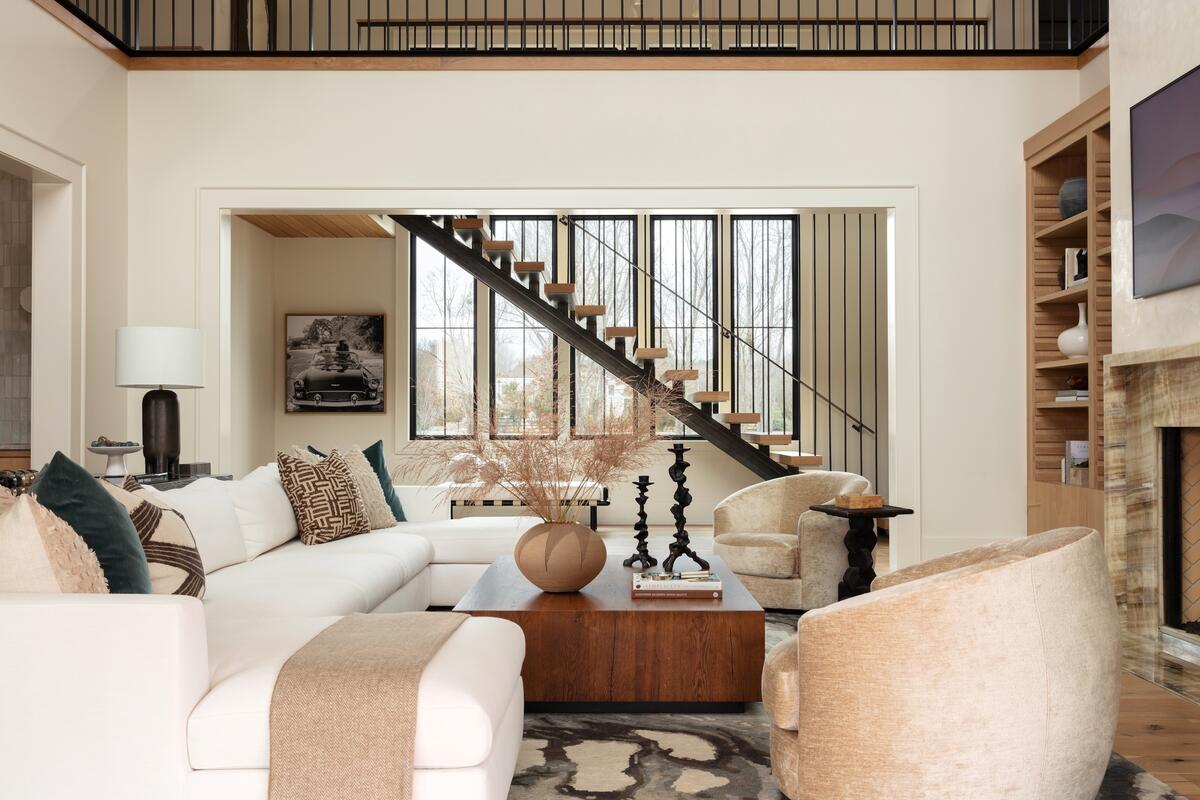
How did you start to grow your team?
A long time went by where it was just me and one or two people working with me, and I officed at home—I’d get up in my pajamas and go read my emails and start my list for the day, and then get dressed and go out to all these job sites. It was just a different way of doing business. And then in about 2018, we were remodeling our house, and I had all these workers coming in and getting on computers in my house instead of having an office. And my husband was like, “You’ve got to get an office and get out of here.” Well, I was so busy that it got pushed to the back burner, and then another year would go by. So then 2020 hits, and I am still home-officing, and Covid’s here. I literally thought, “You know what—I’m going to retire.” I turned to my husband and I said, “I think that this is a sign that I can quit working,” because I thought all the jobs would stop. And the exact opposite happened. We went from eight jobs to 19 between March and July, with projects everywhere from Texas to Arkansas—jobs of all sizes, not all new builds. I was getting DMs on Instagram, emails on my website. And I had never really said no to anyone before, so we took 19 jobs. I hired a junior designer, and I ended up with four people working for me. That’s when I finally found an office, and we moved in December of 2020—which coincidentally is Chris Goddard’s old office.
Then we grew exponentially, but I learned that I don’t want to do 19 jobs, so since then we’ve pared it down. Right now we’re running 13-ish—probably four or five big new builds at a time.
What does your team look like today?
We have my office manager, my business manager, a designer, a project manager and me.
Is that enough people for the work you have?
Well, there are no free days, let me just say that. I do all the design work with my junior designer and project manager. Everything comes from my head, typically based on what the client wants—we sit down with [them] and talk through the whole house. Then we go room by room, all of us together, so everybody’s on the same page and there are no gaps in knowledge. And then we break apart [to do our individual tasks]. I do the design; my junior designer draws, does most of our CAD and Revit, and works with me on sourcing; and then my project manager kind of takes over from there and keeps the flow going.
We couldn’t take on any more big jobs, because right now we’re doing jobs in three states [in addition to] Arkansas. I don’t ever like to feel like I’ve pushed myself to the [point in our] workload that it’s not fun anymore, [especially after Covid] about pushed us over the edge. Being stressed every day makes for a horrible work environment. I am a very detailed, bossy person. I have high standards, and it’s not always the best, because I’m like, “Get this done, get this done, get this done.” I expect everybody to work at my level, when that’s not really possible because [my team members] don’t have all the knowledge and they don’t talk to the client every day. So, I’m expecting people to kind of work with my knowledge, when they’re working with theirs.
Projects of this scale and size often take years to finish, which can be challenging for young designers because it takes so much time to get experience in the whole process, start to finish.
Here’s the great thing about working in a boutique firm, though: Your hands touch every aspect of the design. I had an intern who was fabulous, but she moved away and got married. She got a job at a big design firm and was really sad because she said, “I’m going to be doing electrical layouts, and that’s all.” On the other hand, a former employee who moved to San Francisco and got a job at a bigger firm said, “They told me I got the job because I had worked in a design firm where I was able to see every little aspect of how design happens.”
Another challenge with younger designers is that I don’t feel like I can hand off design to them. No matter how competent they are, most of my young designers go straight to whatever the latest fad is or the coolest thing they just saw. They might pull a funky midcentury modern knockoff chair into a room with all this other high-end furniture, and I’m just like, “What is that doing with this stuff?” I always tell them we don’t start sourcing until we have a design plan—until we know what we are trying to accomplish. But most people—everyone that’s ever worked for me—wants to just start shopping for the job. That’s been one of the biggest things I’ve had to teach pretty much everyone that’s come on, is that’s not how it works.
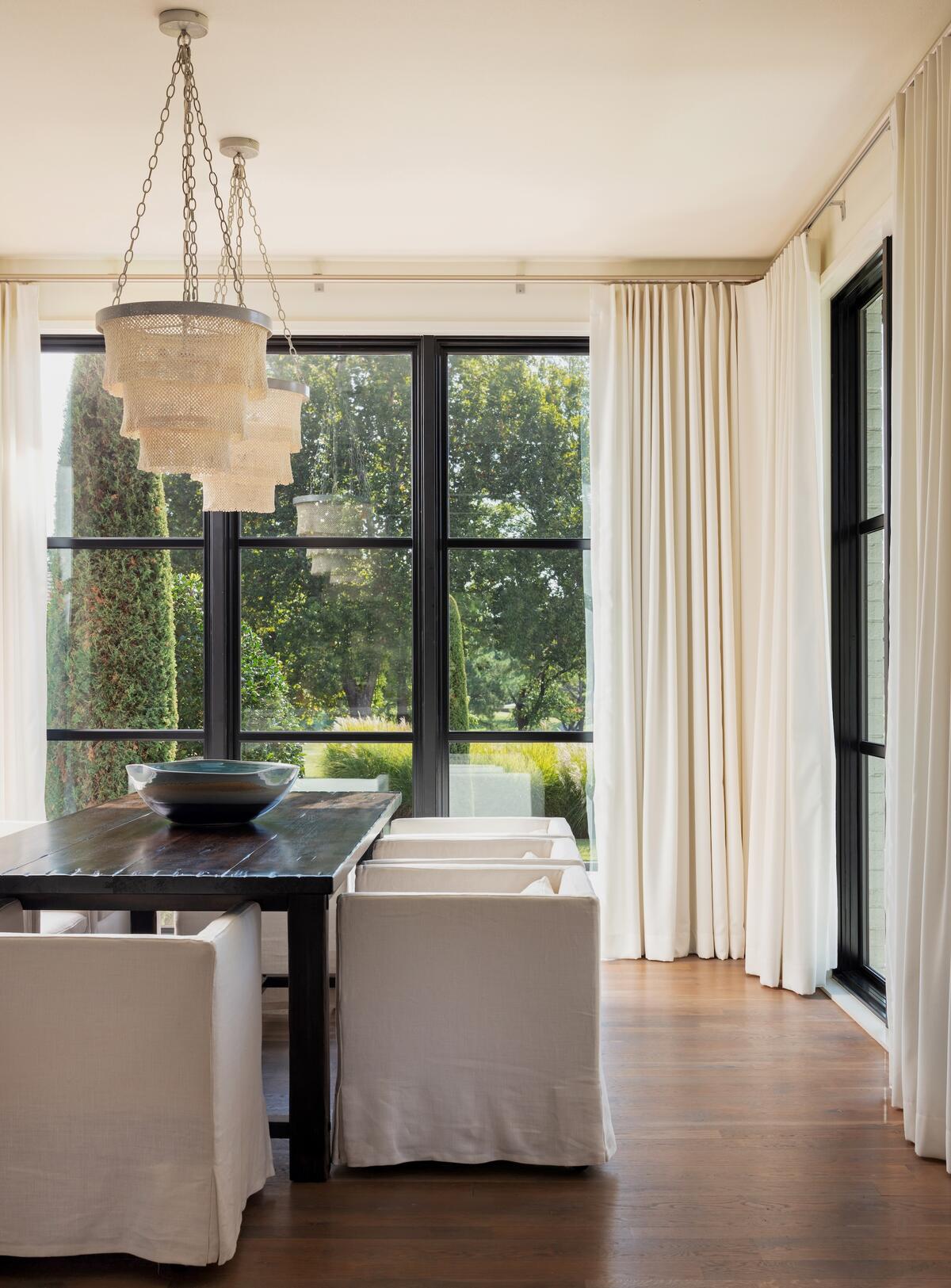
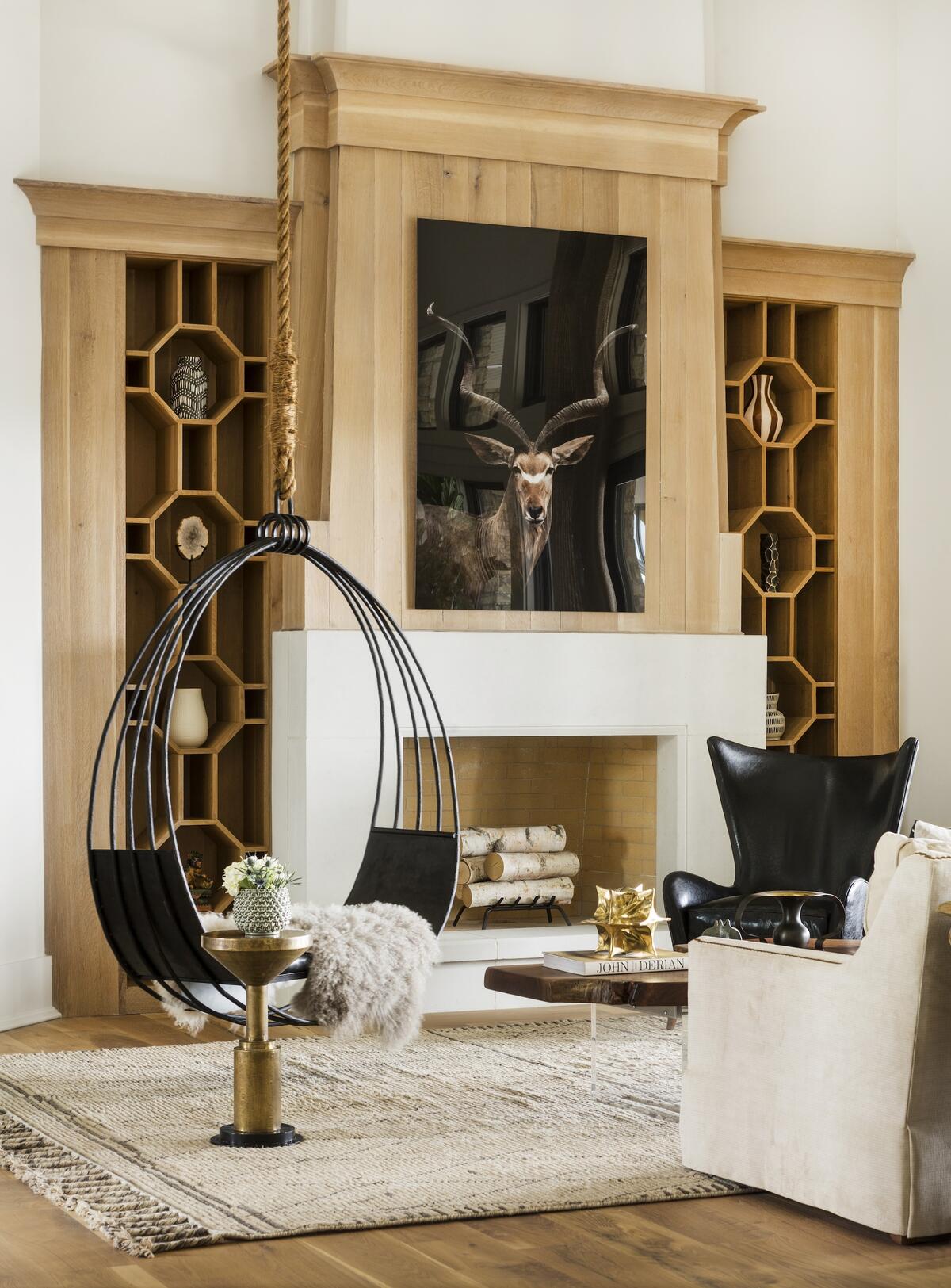
How do you handle client management?
We typically start with a discovery call, and then we bring the client in and everyone meets them. And we sit down and discuss. They have a giant questionnaire they have to fill out, and we go over it and ask all the other subtle questions that we want to know. We explain all our processes as far as how we [design and] bill and all that. My junior designer is usually with me at the job site because she’s putting stuff into her computer. We meet regularly and discuss everything, but we have a shared-workflow Google Doc with every single detail on every single house—and we share it with the builder and the client, as well as [versions] that go to each specific sub. Clients can see it if they want, but most of them don’t.
When I interviewed Chris Goddard in 2020, he explained how unique your location is in terms of this pocket of wealth, and how much discretion is required.
Oh, I’ve had tons of houses, including one of our very best, that were never published.
Do you photograph it? Can you show it anywhere, even just to prospective clients?
No. I did this house in that same neighborhood [I told you about] that had sat empty for six years—a really, really wealthy woman in Arkansas had started building it, gone through all these builders, and then got sick and died. It was this massive stone country house that looks like it should be on acreage, but it was on a two-acre lot—and the main house is 14,000 or 16,000 square feet, and then it had a three-bedroom guesthouse. And [both buildings were] still studs on the inside.
This builder brought me there to meet a client, and he was like, “But Casey, seriously, don’t tell them everything you would do, because you’ll scare them off. Just keep it simple.” And I was like, “Roger, I don’t know if I can do that.” I walk in and meet this super nice couple, and the husband asks what I would do with the entry area, which had a two-story vaulted ceiling, a bad staircase on the left, and a concrete elevator shaft [blocking] these giant windows with an incredible view. And as Roger looks over at me, I said, “Well, I’d take that wall out.” And the [potential client] goes, “Me too. Why wouldn’t you want to walk in and see straight out to the view?”
We started walking around, and by the end of the meeting, the husband turned to the wife and said, “If I hire her, can I buy this house?” The wife had wanted a much smaller home, but she said, “If you hire her, we’ll stay married and I’ll let you buy the house. But if you don’t hire her, we have really big problems.” And so Roger was like, “Well, what about me? Am I hired too?” We spent two years and millions of dollars finishing that house—it was the most fabulous house—and then they only lived there for a year. Even though they said, “We’re not doing it. We’re not doing it,” they [ended up] letting At Home in Arkansas come take pictures. It got published, and the next month, someone knocked on their door and offered them millions for it. They turned it down the first time. But when a Realtor heard someone did that, they got three offers, and within, like, two weeks, they sold the house.
Oh, my God. After all that? Was it just too good of an offer to pass up?
It was. But now that house has been completely gutted—that’s the saddest thing in the whole wide world. That’s also how much money we have here. This will just tell you: That house sold for millions, and [the current owners] are in their third year of reconstruction. An incoming football coach bought it first—a house that literally had been just redone—had it for a year, and he sold it to the [current owners] when he left three years ago, and it has been under construction since then. They gutted the whole entire thing.
I’ve since built [those clients] another big house, but less big and more modern, and it’s beautiful. But the reason I brought that up is that they won’t publish it now, because they’re like, “What if someone comes and knocks on our door?” The husband is like, “Well, we’ll sell it and do it again.” She’s like, “No, I’m never doing that again.”
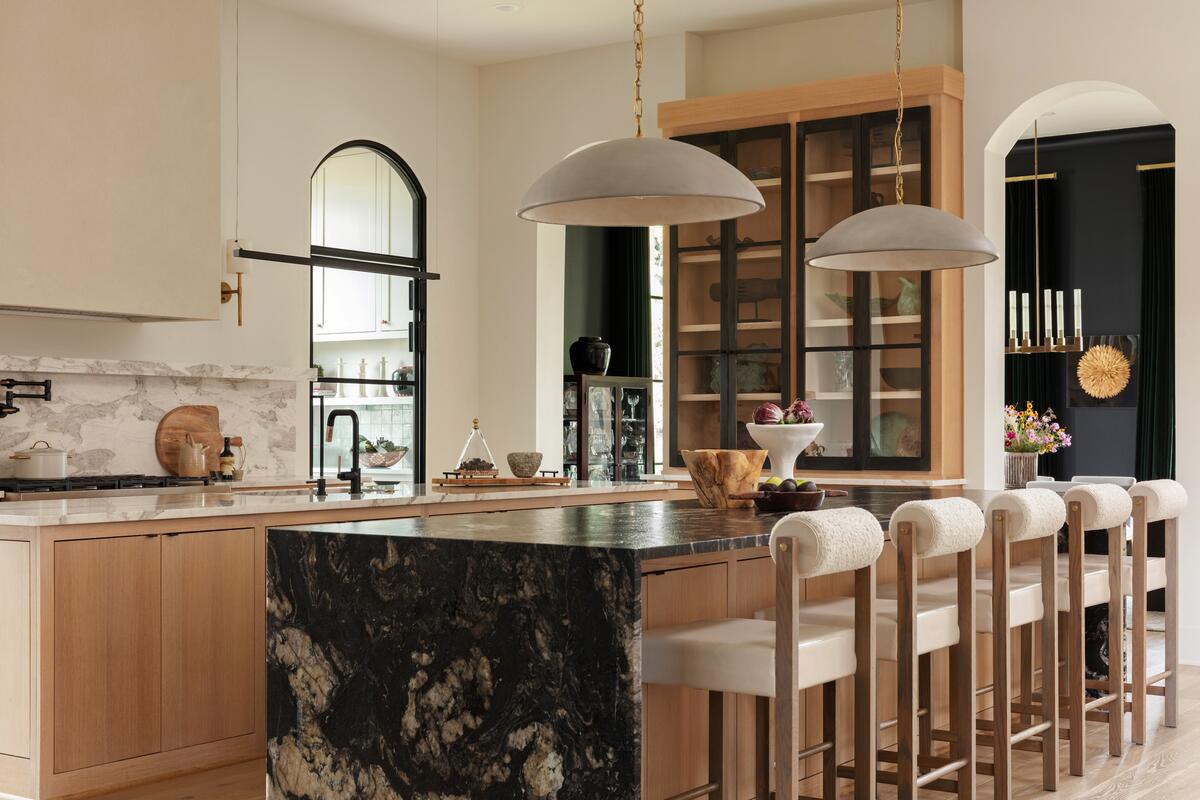
At Home in Arkansas has some serious power! I can’t think of another place where local or regional press matters in that way. How has that changed the way you work?
It’s the only statewide magazine that is about houses. In the past, I didn’t even shoot a lot of my houses, but I obviously do that now. On pretty much every single house—unless they don’t let me completely finish their house, which is a little bit of an issue since Covid.
What changed?
We will do these massive houses, but the clients won’t hang artwork, or won’t let us get the draperies in, or there’s some finish items that they’re like, “We just have to stop [spending money].” And so I’m trying to educate my clients to please stay on budget so their house can be finished.
We just finished a 10,000-square-footer for this young family—and I mean, they have Disney World at their house. They have a 60-foot pool that has an infinity hot tub. They have 11 outdoor spaces. They had a full outside kitchen with a teppanyaki grill and every kind of thing you can think of. But when it got down to getting finished, he was like, “I just need to wait like six months to a year.” We were recently over there putting in electronic drapes and shades in their primary bedroom and bath, and the wife goes, “It just doesn’t feel homey yet.” And I was like, “It’s not going to if you don’t have rugs, or if you don’t have art on your walls. You don’t have lamps in some of these rooms because they haven't been ordered.” And I said, “You built this multimillion-dollar house and [you need to budget now for those things],” but they don’t always listen to you. If they don’t stay on budget, then they’re living in this mausoleum of a house [where] they can hear a pin drop because they don’t have rugs.
The last 10 percent is what makes it feel good.
Yes. One of the things I think has really changed with Covid is that clients have [lost patience for the process]. Before Covid, we did the whole reveal. When they walk in, it’s done. We’ve accessorized it and hung the art, we have wine and cheese and hors d’oeuvres ready, and the music is going as we welcome the family. Since Covid, people are more likely to say, “I just want in my house. I don’t care if it’s been [finished or not].” But they’re going to care.
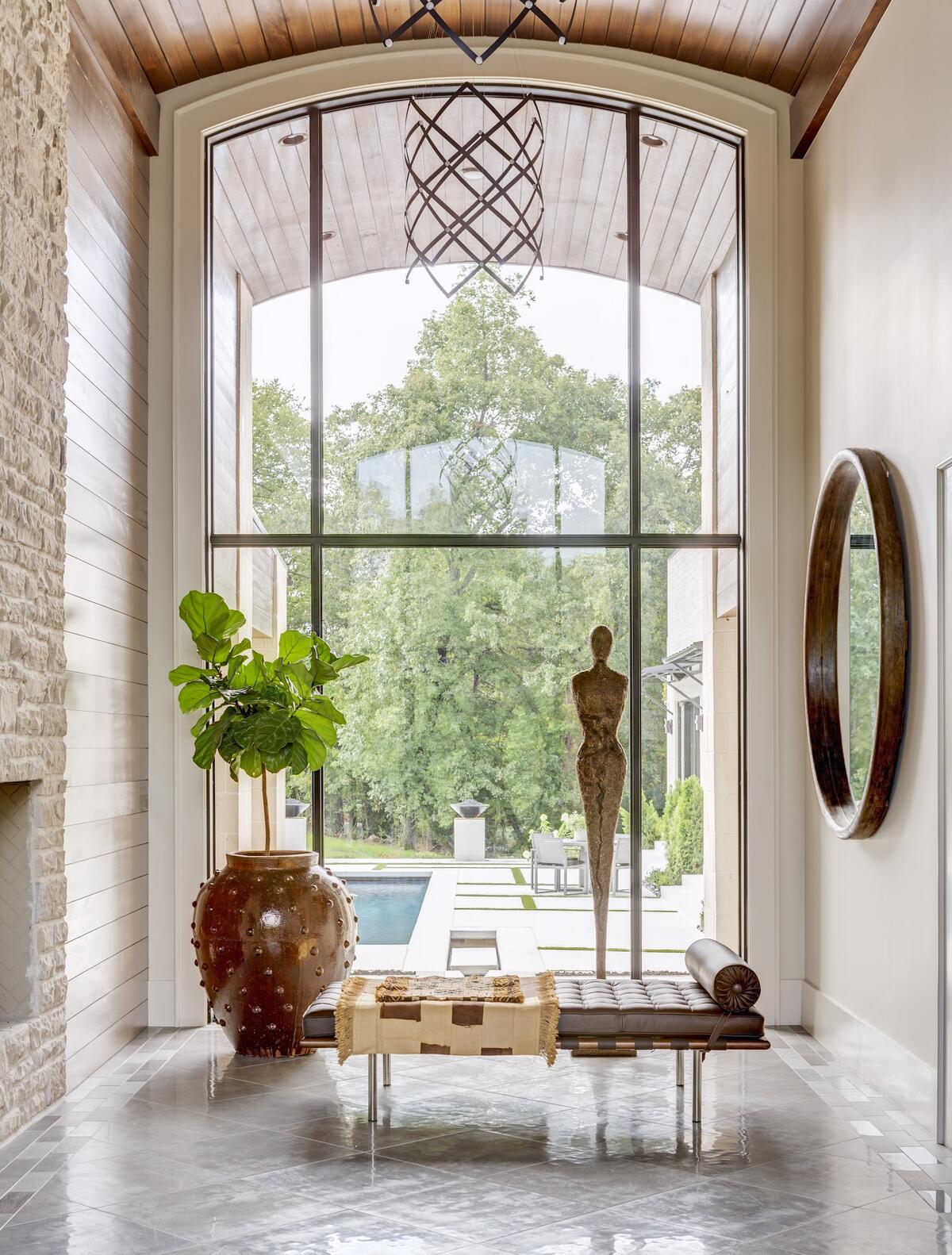
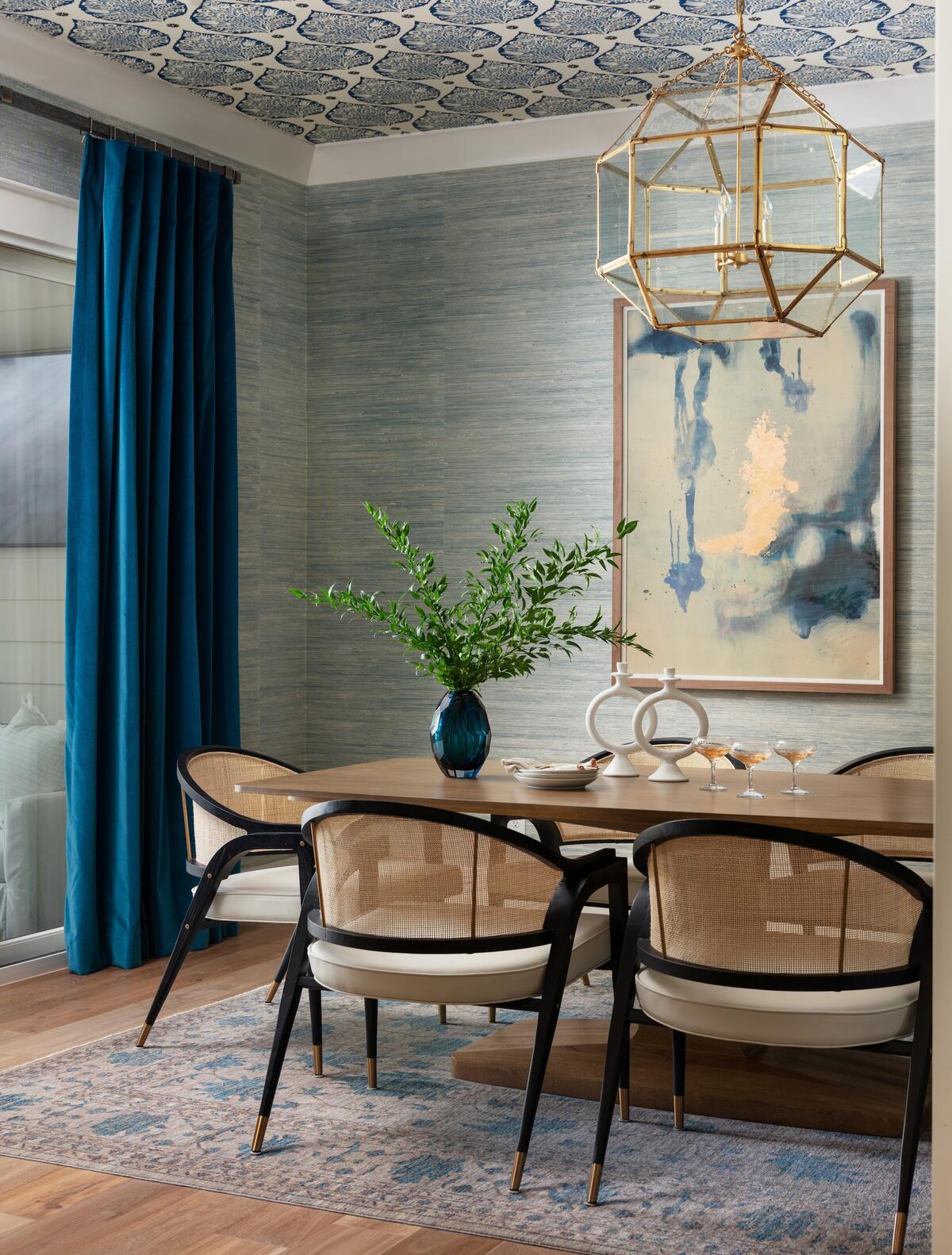
How do you approach billing for your work and talking about money with clients?
I’ve gotten better at it. As part of our proposal to clients, we have a document that explains how we bill, and that we require 100 percent payment to purchase furniture, and that you get a final invoice for freight. As far as design work, we try to do only flat-fee billing. We do a cost estimate, come up with a flat fee, then divide it into two or three payments. We can do monthly if the job actually progresses in a monthly fashion, but right now that is not happening. [Something] I’ve got to start sticking to is that we do not work in arrears—we do not work and then bill. Yesterday, I had a new client call for a beach house we’re doing in Connecticut on the Long Island Sound, and we’re gonna go up and gut and redo the majority of it. He was asking me why the payment schedule was the way it was, and I had to explain that to him.
I said, “Well, most design happens in the first eight to 10 weeks, where you do CAD drawings, all the concepts, because you can’t move forward with your build if you don’t have it done. And I’m not going to work and get paid later. You know, we really should get half upfront, because more than half of the work will be done in [those first] weeks.” Typically, we will do hourly, or on small jobs, we’ll do a large deposit for hours. So, when we’re doing a piecemeal job, we keep like a $5,000 retainer and then bill [against that. The client will] get an invoice. And then we tell them we’re taking it out of their funds. And when they hit 75 percent of the retainer, we request another one. But like everybody, we have clients who don’t want to pay.
Why don’t some clients pay their bills?
We did a very high-end outdoor area design for a client, and we purchased a lot of things from Made Goods. We did this in August, and we were all set to install in October, when the client said, “We’ve decided to do this [other outdoor project] and enclose this room, so can we just put the pieces in storage until the summer, when we’ll be done, and install then?” And this is my fault—this is where I’ve learned a big lesson. I said yes, but it’s going to be your storage unit, and you’re going to pay for it. They were fine with that.
When they [ultimately] installed it over the summer, one of the tables had a chip. But by then, Made Goods is like, “Sorry, but you’ve had it for nine months, so we’re not doing anything about it.” But [the client] was like, “I want a new table.” I explained that the manufacturer was not going to give a new one, and she was like, “Well, then I want you to buy me a new table.” And I said, “Well, your husband said he wanted it repaired.” And she goes, “Well, I want a new one.” We got it repaired, and everything was fine. But all that time, they had not paid—come November, and they still had not paid their bills since install in July. I had been billing her in July, August, September, October—it was for some hours and some pillows we had made. She finally sends me a response: “You know, I’m just not willing to pay for this because I want a new table. When you bring me a new table, I’ll pay your bill.” I explained that I wasn’t buying her a new table and that she [missed the exchange time frame] by keeping it for a year. And she’s like, “Well, I don’t care. I want what I want.” And so there you are. She’s not going to pay her bill.
That’s wild.
It’s my fault, because we were too busy and I didn’t stay up on the fact that they didn’t have money in their account. So that’s one thing. And I didn’t have her sign a disclaimer that she was keeping this stuff for a year before installing it, so we had no recourse. All these things that I now know that I should have done—I’m paying for it, so lesson learned. It’s a few thousand dollars, so it’s not like it’s a huge amount of money [for me now], but maybe 10 years ago, I would have been having a heart attack over it.
That’s the thing about getting big enough: You have to eat money all the time and it doesn’t bother you. And it should. That’s the thing that happens when you start growing—you start saying, “Well, that’s just the cost of doing business.” At the end of the year, you look at your bad debt, your uncollectible debt, or your costs to replace a table, [which] I had to do after some chairs were lost in freight but neither the vendor nor the freight dealer would replace them. I have this wonderful client, so of course I have to buy brand-new [table] and chairs.
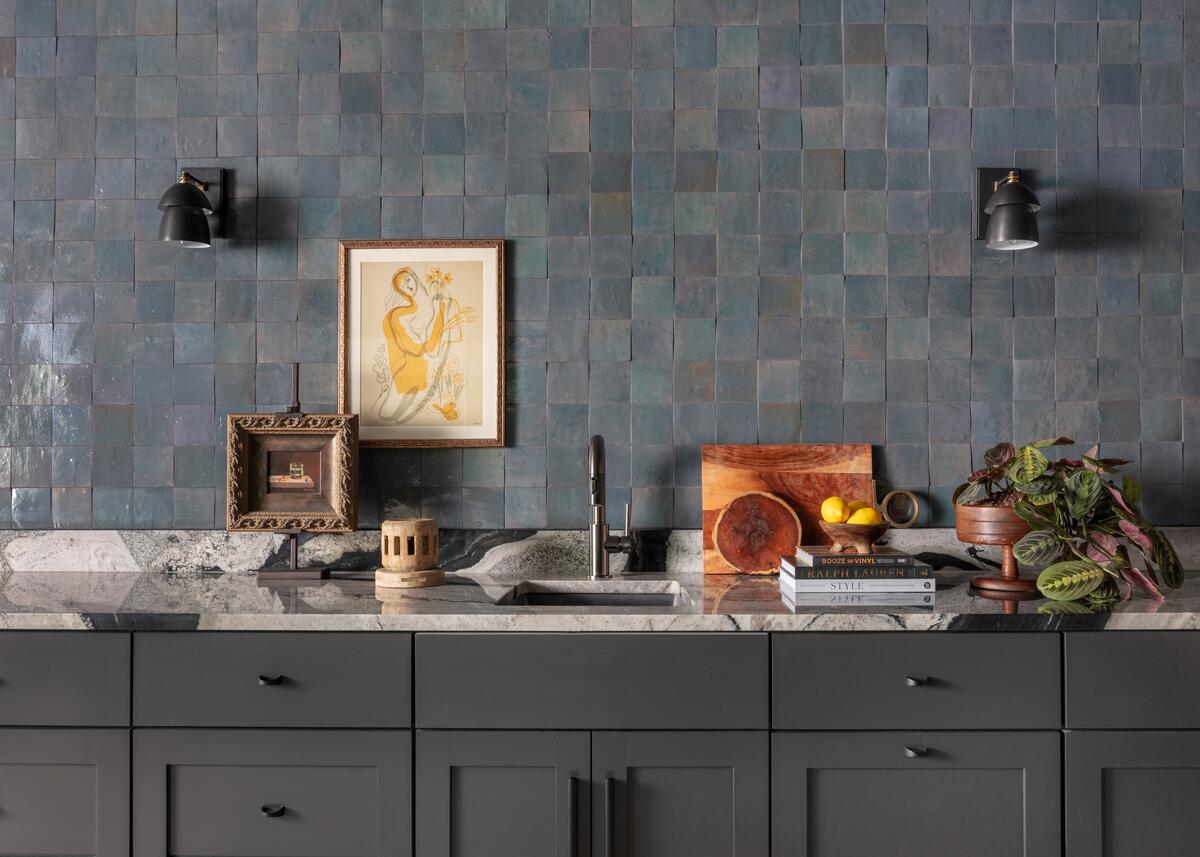
You’ve told me a lot about the local market in Northern Arkansas. What about the design scene?
I don’t want to say we’re not competitive as far as wanting new business, but we’re very friendly. We include each other and share our work. In other parts of the state, that’s probably less true—I know designers who say, “Oh, that would never happen in Little Rock.” But there is so much work here, and so many levels of designers, and there is a place for everyone. Now, there are a few homeowners who love to designer-hop. They’re big-money people in this area, and over my lifetime of design, they have gone from one designer to the next. You can’t really take it personally. You also have to decide whether to take that kind of client, right? It’s a small enough community that if you’ve lived here 20 years, you pretty much know everybody somehow.
What does success mean for you today in your business?
Well, it’s not monetary. Success for me is that I am a trusted, valued person that people are willing to give their home to. If the work I’ve done is good and my team is happy, that’s how I get new business—referrals. We were just in At Home, and [in the article] I said, “Imagine a space that is a private sanctuary from the world—a personal haven filled with treasure pieces that evoke your treasured memories. We exist to bring it to life.” And that is what we try to do.
To learn more about Casey Sarkin, visit her website or find her on Instagram.
















